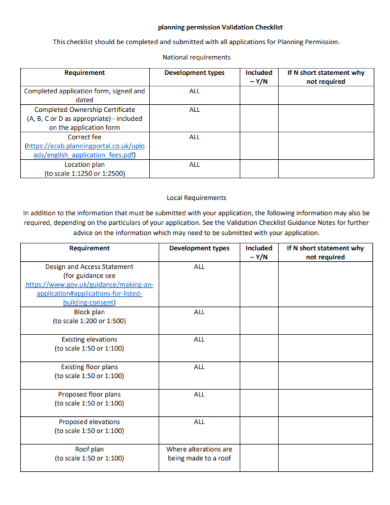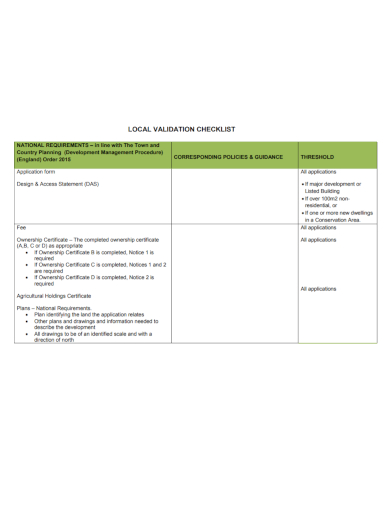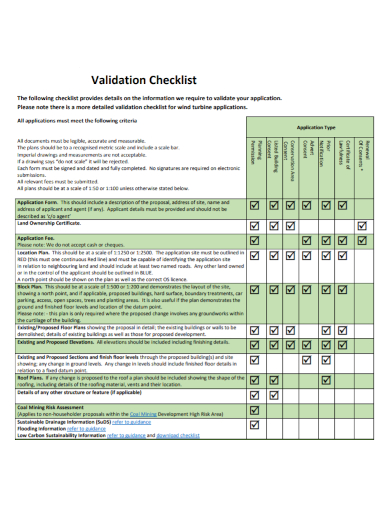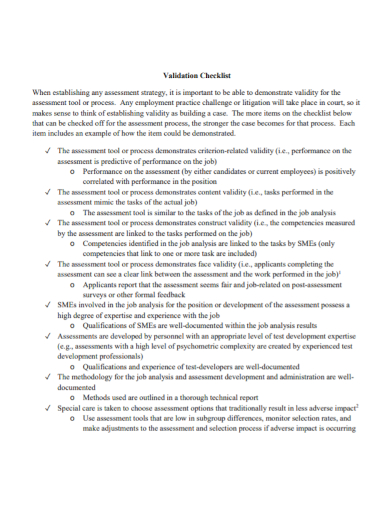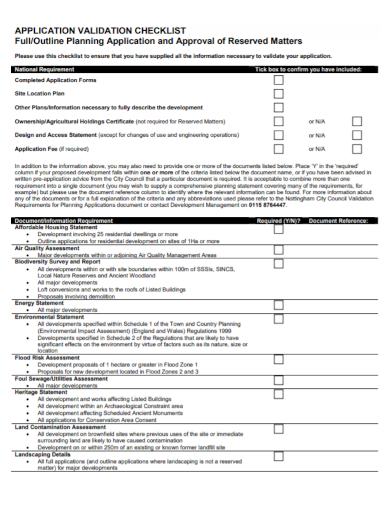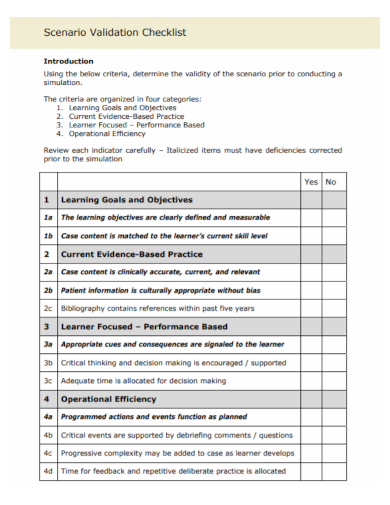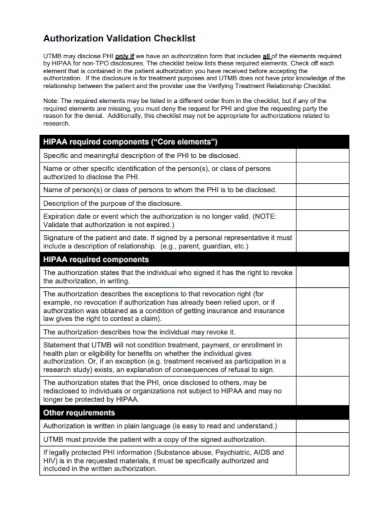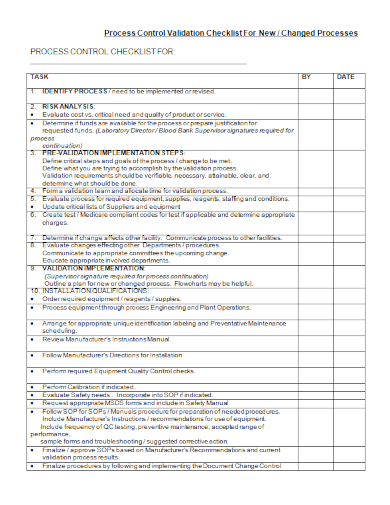Before starting a new project, businesses and organizations all over the world know how important it is to have a well-thought-out plan. It is also important that they know the plans they have for their businesses and organizations, both inside and outside of them. During the planning and implementation of plans that will help the organization as a whole, it is also important to make sure that everyone in the organization is working together and is ready for anything that might happen. If you own a business, you need a detailed plan so you don’t waste time and money on mistakes you could have avoided. Anyone who runs a business needs to know how to make a detailed plan. They will probably save a lot of time and money because they won’t waste time and money on things that they could have avoided. On the other hand, a well-written audit checklist makes sure that everyone and everything works together as a team, leading to the successful completion of the project and the achievement of real results. People in charge of a business use documents like these all the time to run the day-to-day operations of the business. If you want to make major changes to how your organization works, it can be very helpful to use the information in these documents.
If you make checklists ahead of time, you can be ready for anything that could happen at work or during a normal workweek. Check the project to make sure that everyone working on it has the same goals and ideas as you do. Create a set of business strategies and make sure they are carried out correctly and on time. Depending on how the strategies you plan to use work out or if you get stuck in the middle of putting them into action or making them, the results could be bad for your organization. To get the most out of the document you will make, we suggest you look at the examples of compliance audit checklists we have given you in the next section. When you look at the document and figure out what it does, you can learn more about how it works and how it looks to other people. After you’ve tried to figure out what the document should look like, you can use these sample documents to help you write a thorough checklist for your own company.
10+ Validation Checklist Samples
1. Planning Validation Checklist
2. Planning Permission Validation Checklist
3. Assessment Validation Checklist
4. Local Validation Checklist
5. Validation Checklist
6. Sample Validation Checklist
7. Standard Validation Checklist
8. Application Validation Checklist
9. Scenario Validation Checklist
10. Authorization Validation Checklist
11. Process Control Validation Checklist
What Is a Validation Checklist?
When you work for them, it can be helpful to make compliance audit checklists for their strategies. These tools can have specifications, methods, and plans for both making and putting your company’s strategies into action. Plans for the development and execution of your company’s strategies are documents that can be used to show the specifications, strategies, and plans for both making and putting your company’s strategies into action. On the other hand, a strategic plan can be used for many different things and is not limited to a certain industry. When starting and growing a business, a strategic plan is the best first step you can take to make sure your venture is successful from the start. When it comes to running a business, a road map is a list of tasks and processes that need to be done before the organization can start putting plans into action. Because of the things we’ve already talked about, strategic plans are often more than a few pages long. But in this case, the plan will only be one page long. You can’t say enough about how important it is to make sure that everyone in your organization knows what they need to do next to be successful after they’ve read your finalized strategic plan. When you write your plan, be as specific and clear as you can so that the people who read it know what they need to do. The ability to understand a strategic plan is the most important thing about strategic strategy. This is very important when trying to fit a lot of information onto a single page with little room.
How To Write a Validation Checklist
Writing a list of tasks and activities on a blank piece of paper is not enough to make a good checklist. It will take time and work. There are a few things to do. As the first step in any project management process, you should make sure that your goals are clear and easy for others to understand. Then you need to write down the steps you need to take to get there, explain them to everyone in your organization, and show them to them. You will be able to reach your goal if you just remember and follow a few easy steps. In the sections that follow on this page, we’ll talk about each of these steps in more depth.
- Define your goal
Before you can start making a strategic plan, you need to know what you want to do and how you plan to do it. When you start something new without a clear idea of what you want to achieve, you set yourself up for failure from the start. Before moving forward, it is important to take a first look at the situation and get to know the people you will be working with and the environment in which you will be working. For example, the SMART framework can help you make sure that all of your goals are complete and doable. You should use strategic criteria to make sure that all of your goals are complete and doable. - List down the steps
Before you start a new project, write down the steps you plan to take to get the results you want. This list should always be correct. You have to place an order now, but don’t worry too much about it yet. Please tell us what you have planned for the next few days so we can get everything ready. At the start of the project, you shouldn’t have any other jobs or side projects that take your attention away from your main task. To make a plan, it’s important to write down everything that needs to be done. Making sure that your tasks have enough details and instructions will make sure that they are done the way you want them to be. - Prioritize tasks and deadlines
If you follow the steps in this article, it’s easy to make a list of everything that needs to be done and arrange it in the right order. Start with the steps that will take the most time and money upfront and work your way down to the steps that will take the least time and money. This will save you time and money in the long run. Keep track of what needs to be done before moving on to the next phase so you don’t get too busy. - Set milestones
Over time, a lot of small wins add up to a few big ones. These bigger wins eventually lead to more overall success. Since the deadline is so close, your team will have a lot of reasons to be excited as it gets closer to being done. If you pat your team members on the back often, they’ll be more likely to keep up the good work. This can also make them feel better and push them to keep going on their journey. - Identify the resources needed
Before you start your project, you should do some preliminary checks to make sure you have everything you need. Make sure you have everything you need for your project a long time before you start working on it. If you want to meet the deadlines you’ve set for yourself, you have to work on the project for as long as it takes to do it right. Keep your mind on the task at hand and don’t let things like running out of resources or other supplies pull you away from it. - Visualize your plan
If you want to be successful, you should include in your action plan the information you need to know about how to use your tactics and how to make rules for how to use them. Think about how the plan will work in the real world to see if it will work as well as it should. Make sure you understand the plan better and figure out if you can do what you need to do. - Monitor, Evaluate, Update
Even if a plan has been written down, that doesn’t mean it’s done in every way. If you want to get the best results, you should keep your action plans up to date. They are likely to keep changing and adapting over time. It will grow and change over time, and you will be able to make changes at any time.
FAQs
What are the 4 components of strategic planning?
- Context
- Long-term plan
- Short-term plan
- Implementation plan
What are examples of strategic actions?
- Planning
- Ordinance
- Community practices
- Incentive
What is a good strategic plan?
When a strategic plan is carried out well, it’s easy to see how things are going because it brings everyone together behind a single goal. In contrast to an organization’s tactics, its mission, vision, and values are more general. They make it easier to connect long-term plans to specific goals and tasks that can be done right away.
Before any project can start, a plan must be made so that it can be finished successfully. It gives your idea a chance to work. After reading this post, we think you’ll be able to make a good action plan on your own if you use the methods and templates we’ve given you.
Related Posts
FREE 11+ Freelancer Checklist Samples in MS Word | Google Docs | PDF
FREE 23+ Party Checklist Samples in MS Word | Google Docs | Apple Pages | PDF
FREE 18+ Scheduling Checklist Samples in MS Word | Google Sheets | PDF
FREE 17+ Response Checklist Samples in MS Word | Google Docs | PDF
FREE 17+ Survey Checklist Samples in MS Word | Google Docs | PDF
FREE 18+ Background Checklist Samples in MS Word | Google Sheets | PDF
FREE 18+ Facilitator Checklist Samples in MS Word | Google Sheets | PDF
FREE 18+ Complaint Checklist Samples in MS Word | Google Sheets | PDF
FREE 18+ Internship Checklist Samples in MS Word | Google Docs | PDF
FREE 18+ Statement Checklist Samples in MS Word | Google Sheets | PDF
FREE 20+ Voluntary Checklist Samples in MS Word | Google Sheets | PDF
FREE 18+ Summary Checklist Samples in MS Word | Google Sheets | PDF
FREE 14+ Sponsorship Checklist Samples in MS Word | MS Excel | PDF
FREE 18+ Conference Checklist Samples in MS Word | Google Sheets | PDF
FREE 17+ Lesson Checklist Samples in MS Word | Google Sheets | PDF


